LEONARD MARTIN:Suite Zabriskie
Toutes les images/All images:© Courtesy de l'artiste et TEMPLON, Paris—Brussels—NewYork
Multimedia artist Léonard Martin has joined the Galerie Templon family. The gallery marked his arrival with a solo exhibition of brand-new work, the fruit of a dialogue between painting and film he developed during his 2019 residency at Villa Medici.
Painter, video maker, and sculptor, he strives to build bridges between different eras and forms. The French art scene has been captivated by his work since he graduated from Beaux-Arts de Paris in 2015. His creative process makes use of drawings, papers, and precious sculptures he occasionally animates with stop motion, a motor, or video. Léonard Martin finds his subjects by delving into literature and the history of art. Wooden figures on tracks bring to life the characters of Irish novelist and poet James Joyce on their strolls. Italian painter Paolo Uccello’s horse riders serve as a pretext to create an interactive piece. He sometimes takes a break from building marionettes and automatons and uses painting to capture the theatre of objects that is his workshop. Visibly playing with perspective and cultural labels, particularly “painting” and “sculptures,” the scenes he creates generate a dialogue between mediums and eras.
Toutes les images/All images:© Courtesy de l'artiste et TEMPLON, Paris—Brussels—NewYork
Suite Zabriskie is a new series of paintings that invents a possible sequel to Zabriskie Point (1970), Michelangelo Antonioni’s famous movie, following on from the final scene. The film ends with a luxurious villa exploding in a billowing cloud of smoke and household items suspended in the sky, all against a background of music by Pink Floyd. The canvases emerge in a landscape of objects it would be difficult to describe as still lifes, since their spatial representation cuts loose from genre codes to embrace theatre design, for instance, or mental mapping.
Antonioni’s film criticised the society of the time, disparaging consumerism, police violence and the conservative system. While these problems have yet to be resolved, they have now been joined by other issues, such as the ecological crisis and need to protect the living world.
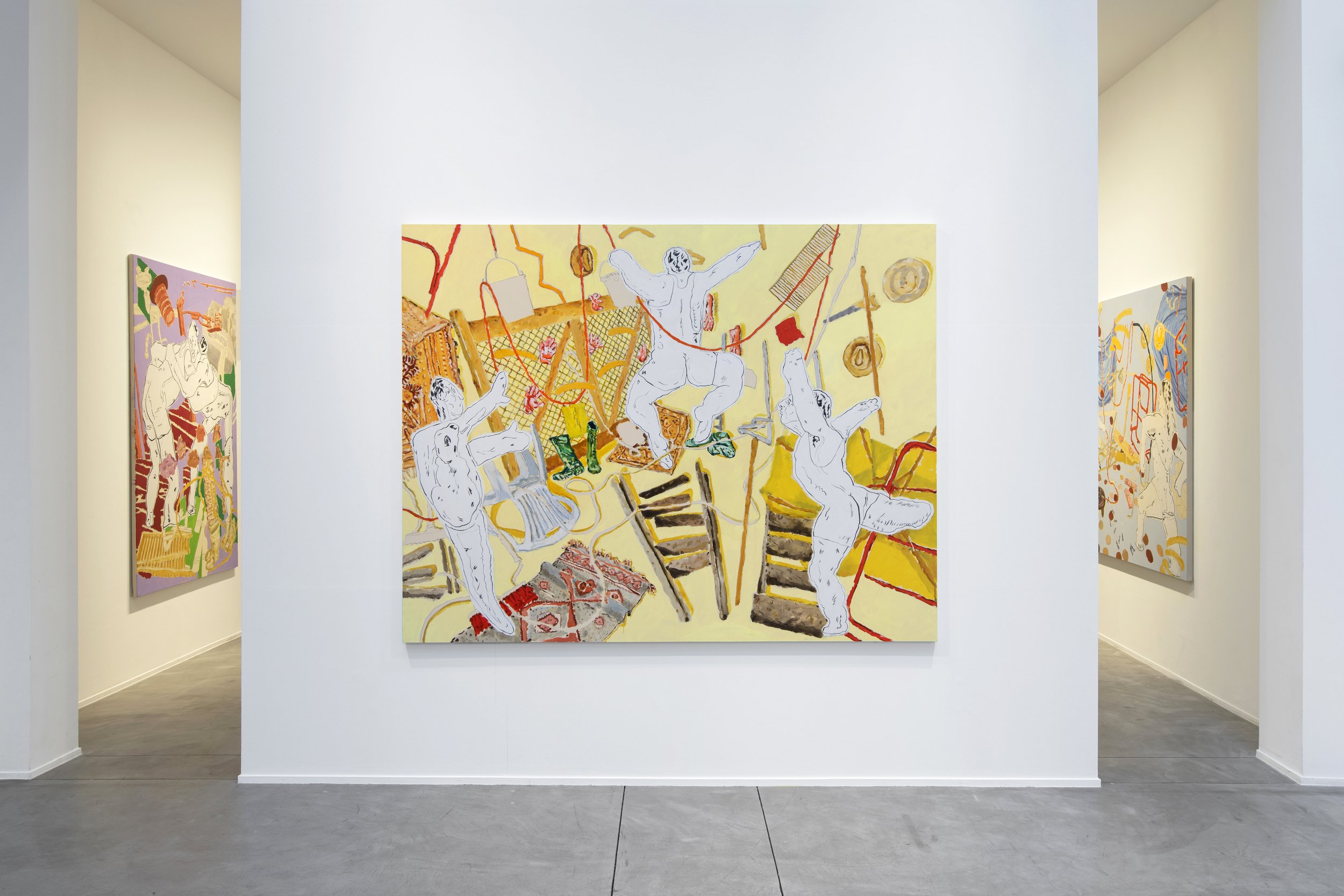
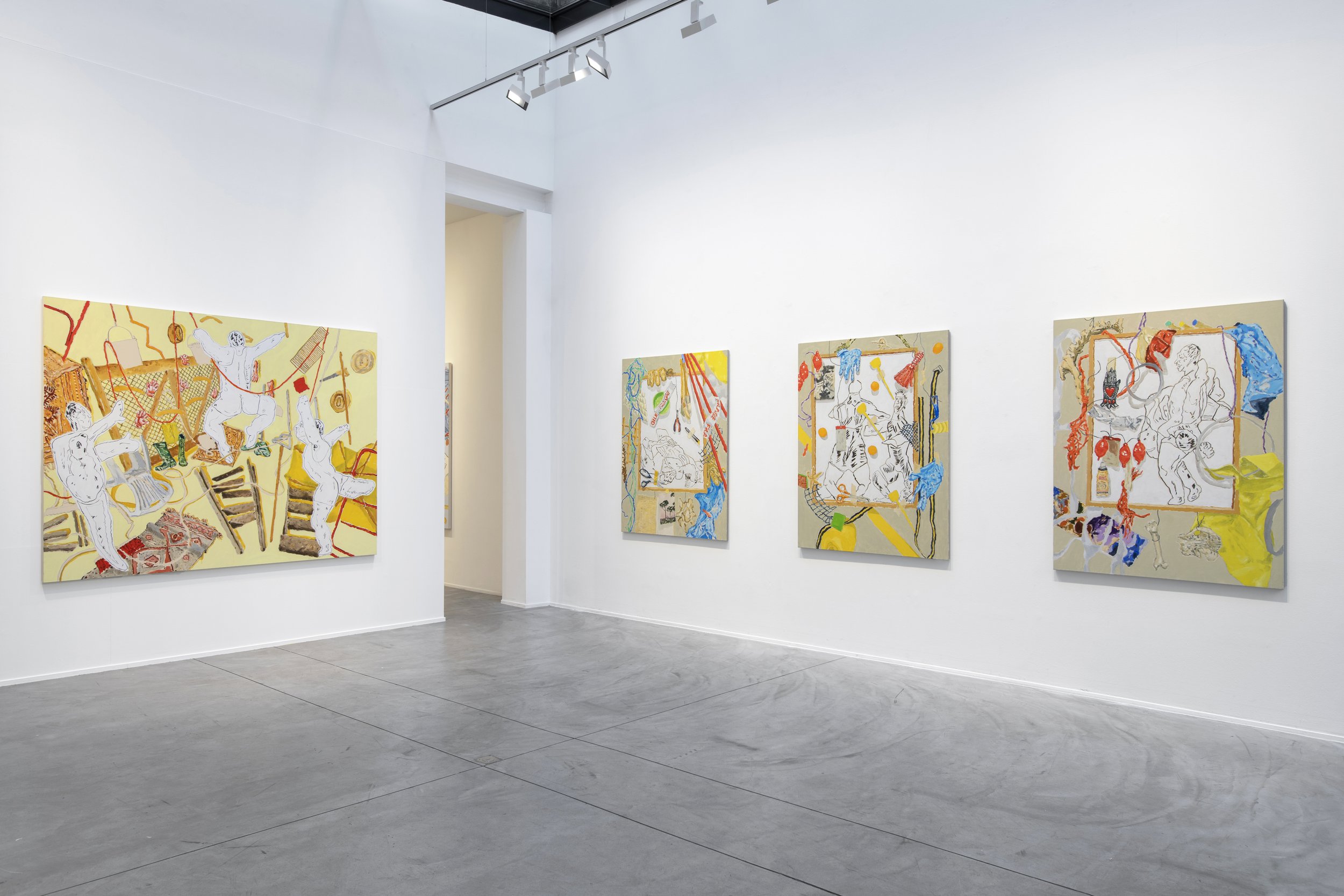
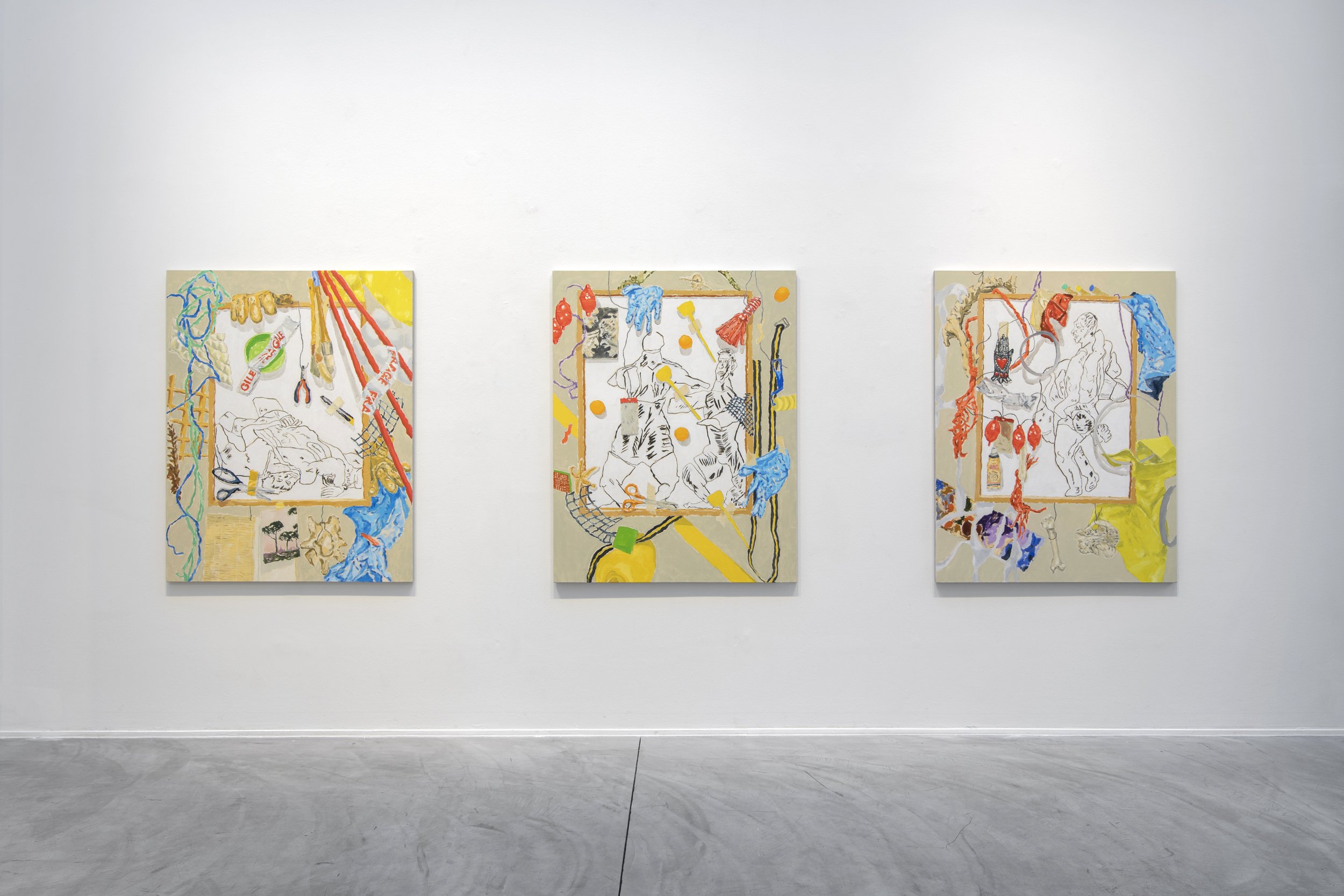
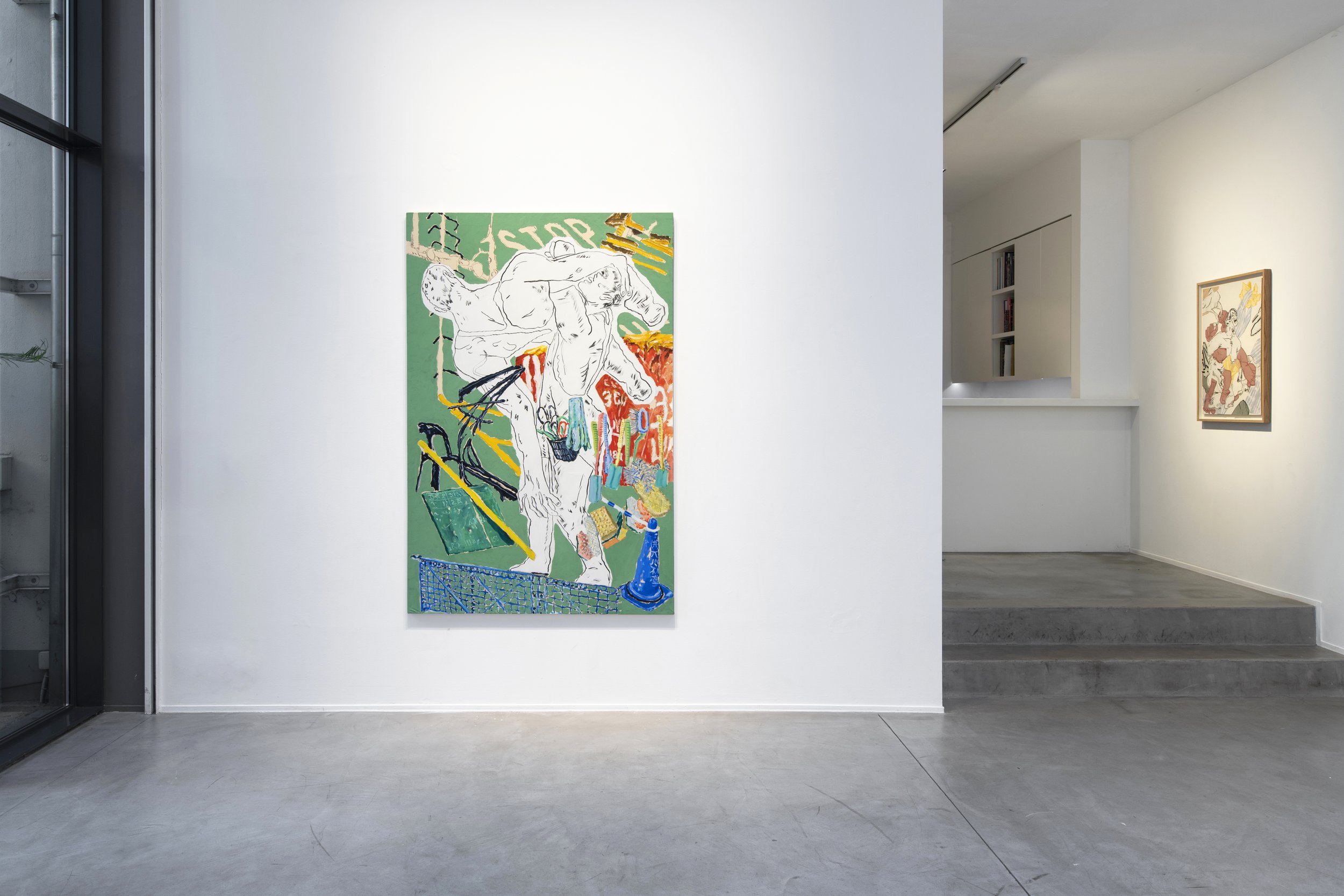
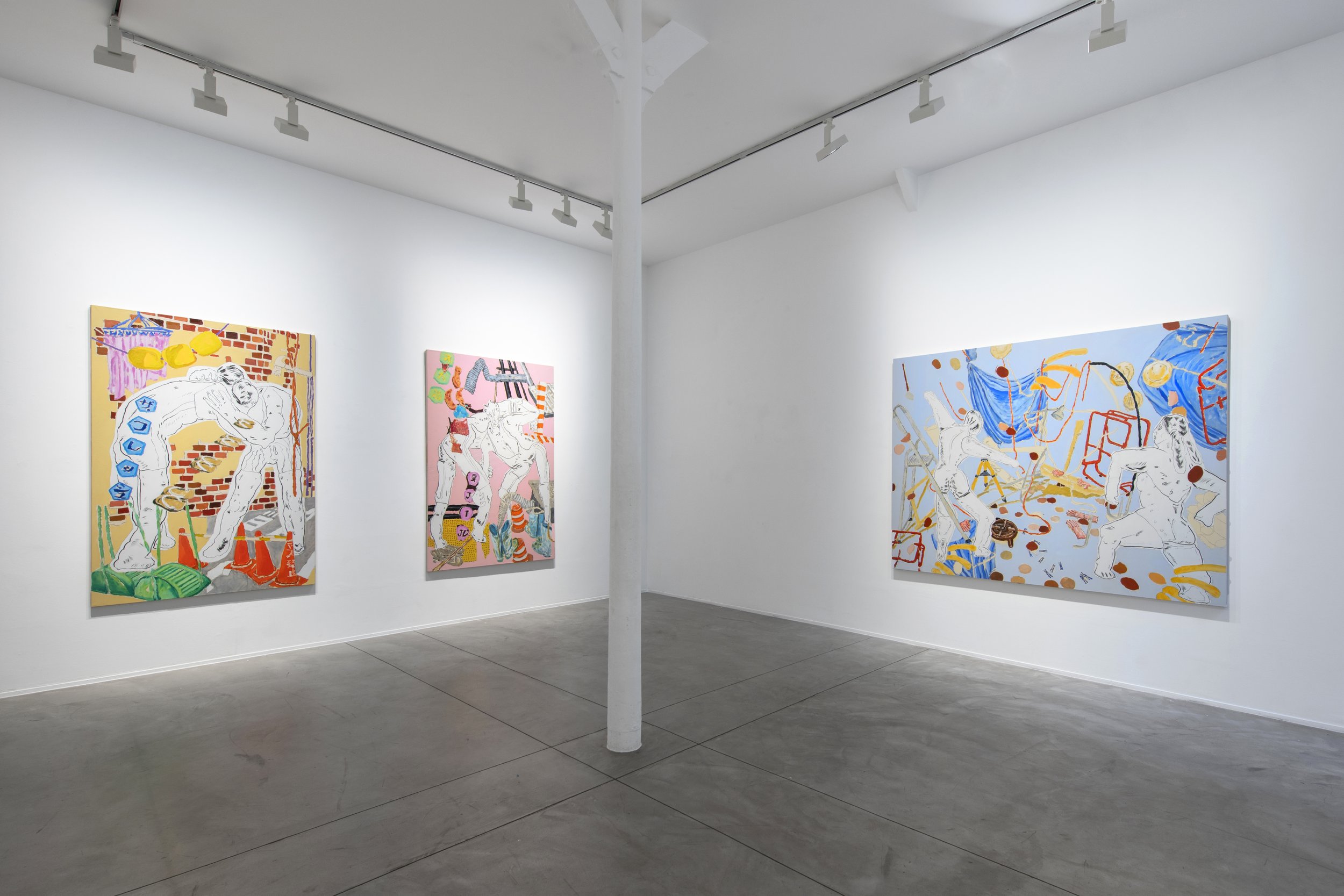
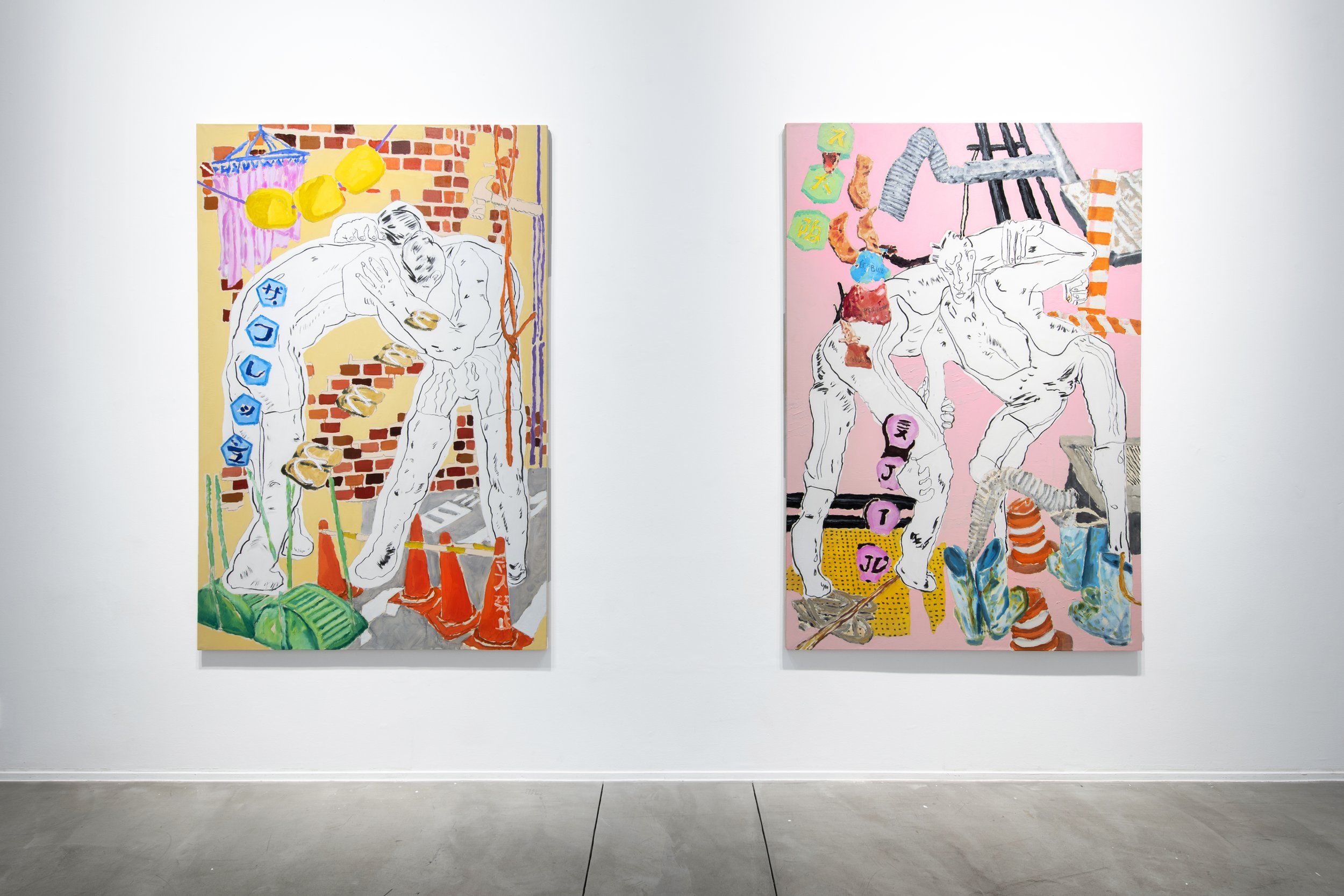
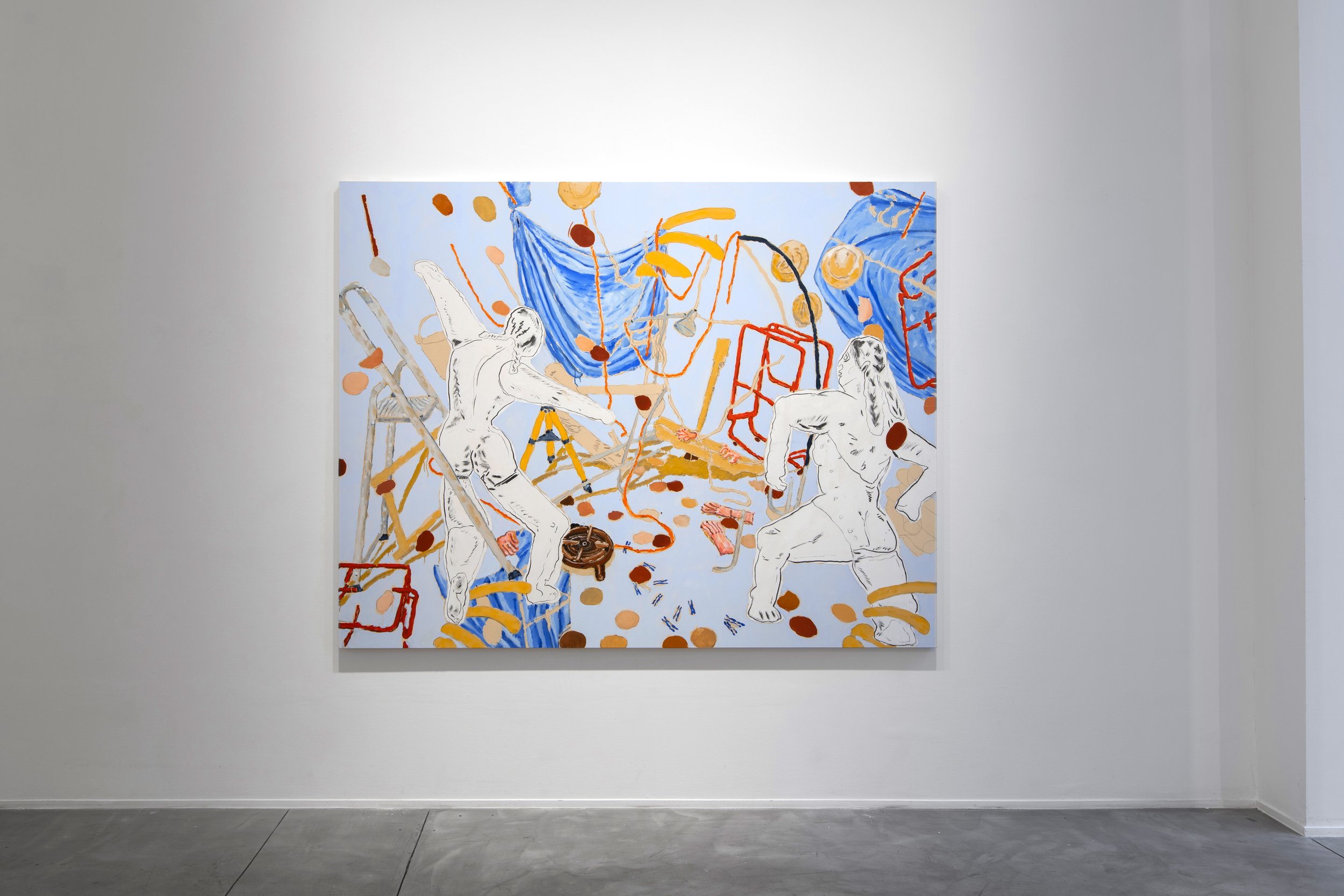
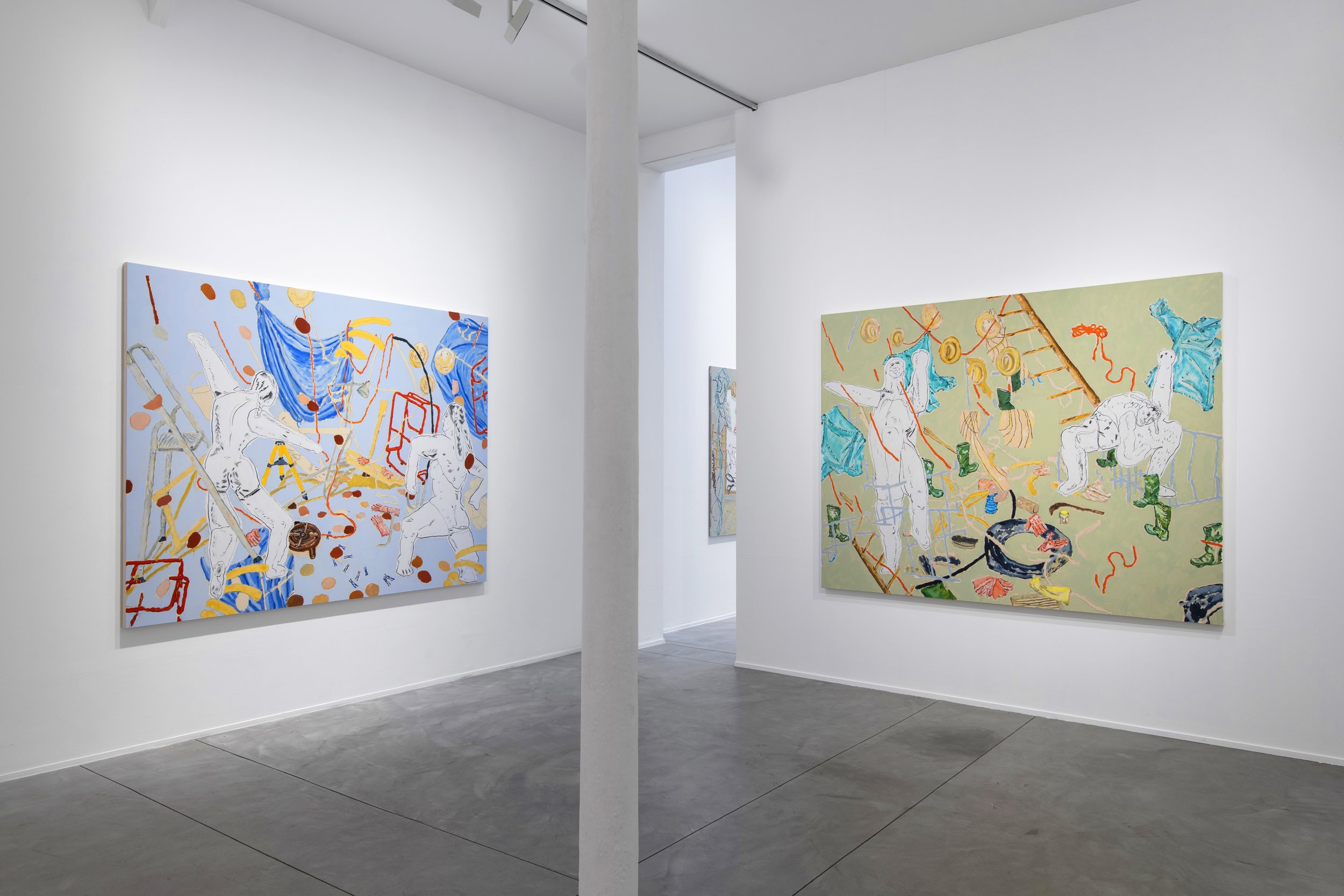
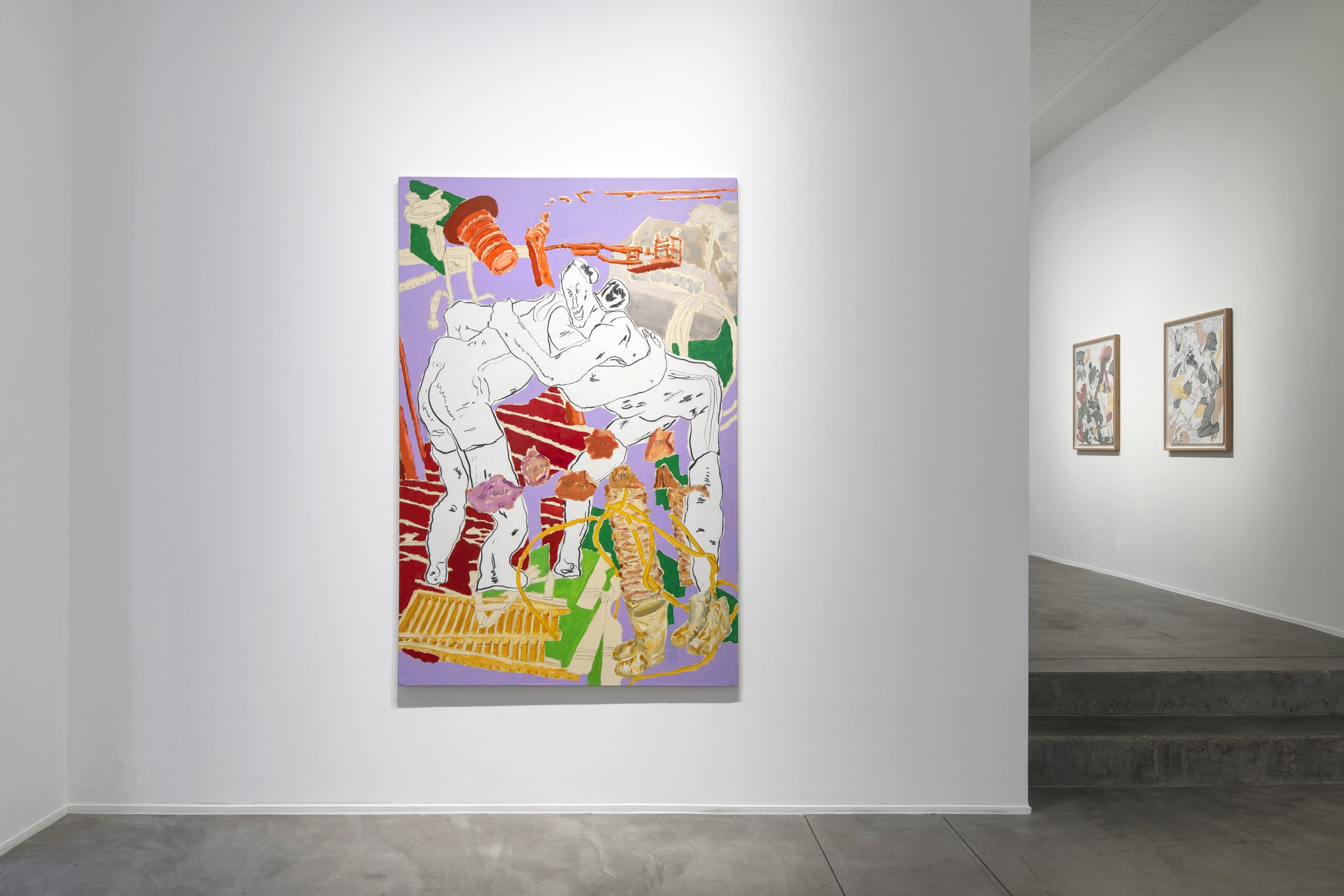
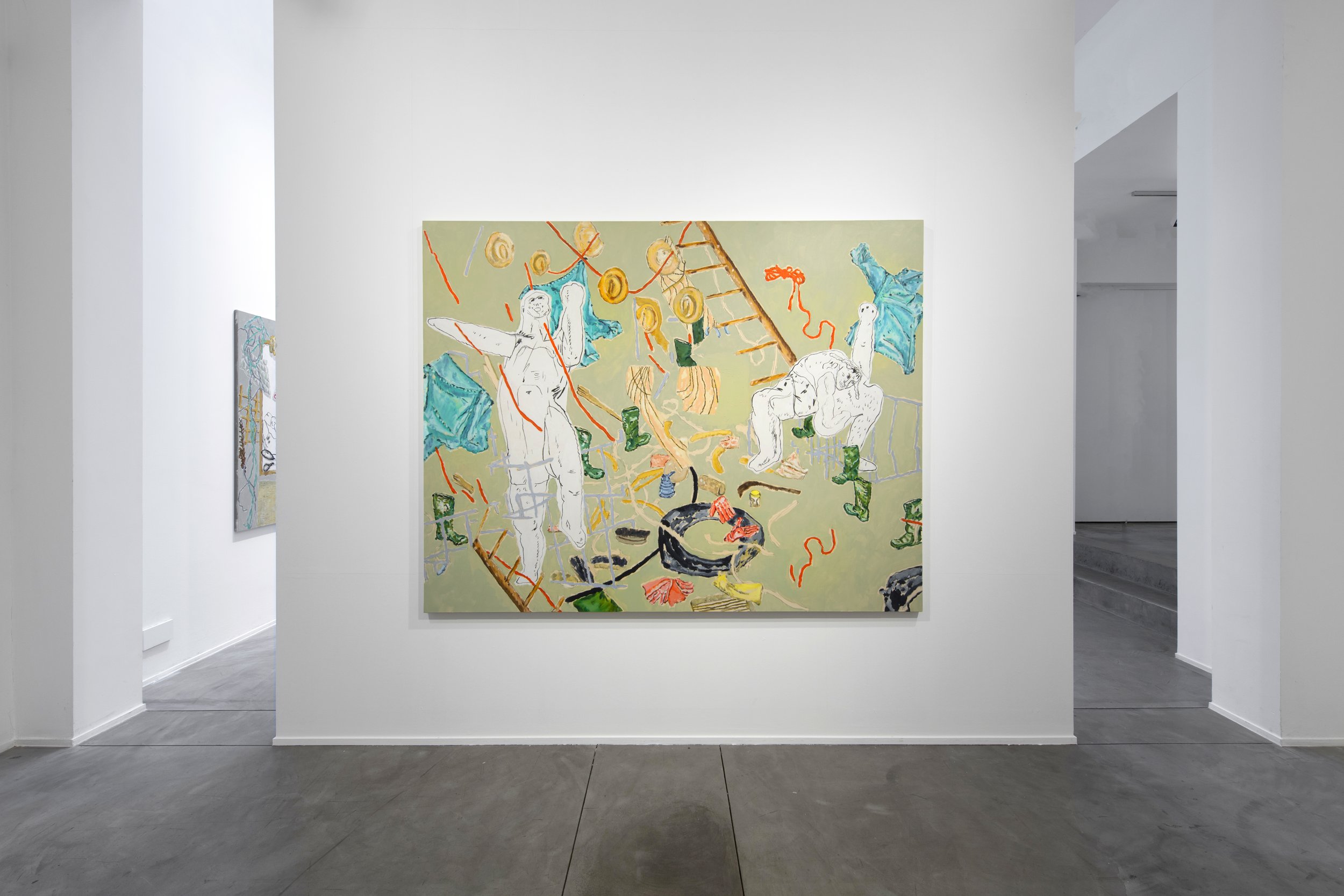
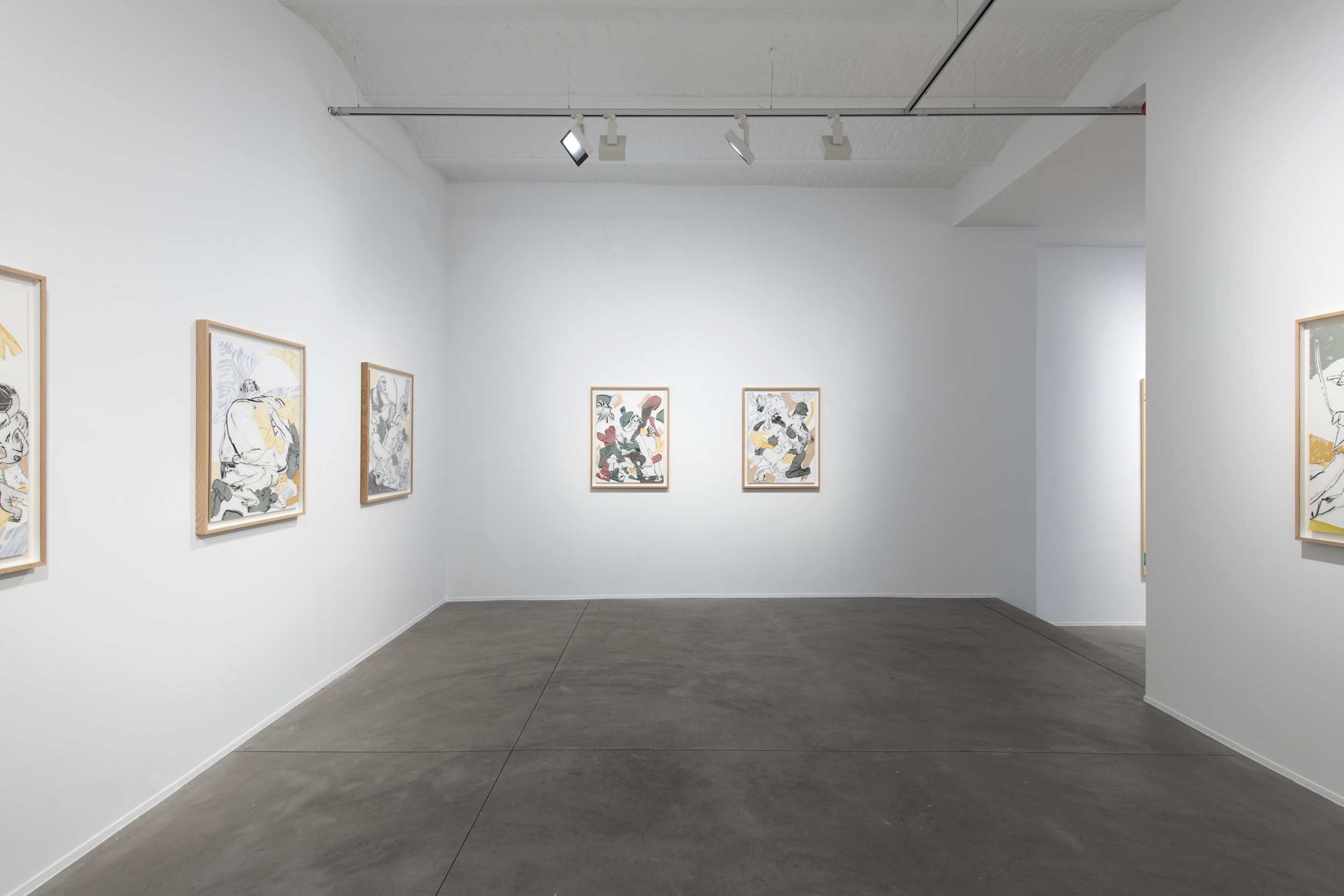
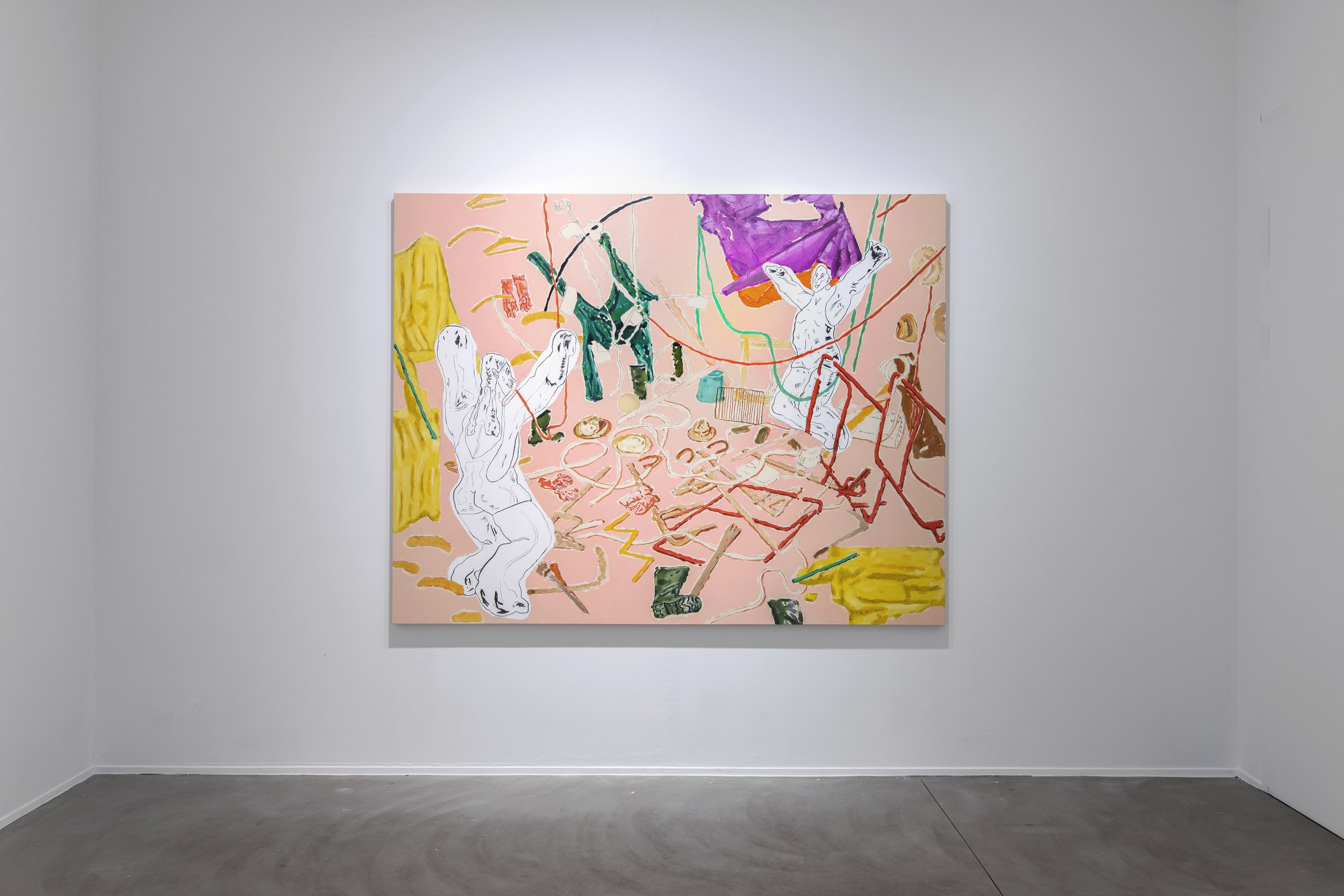
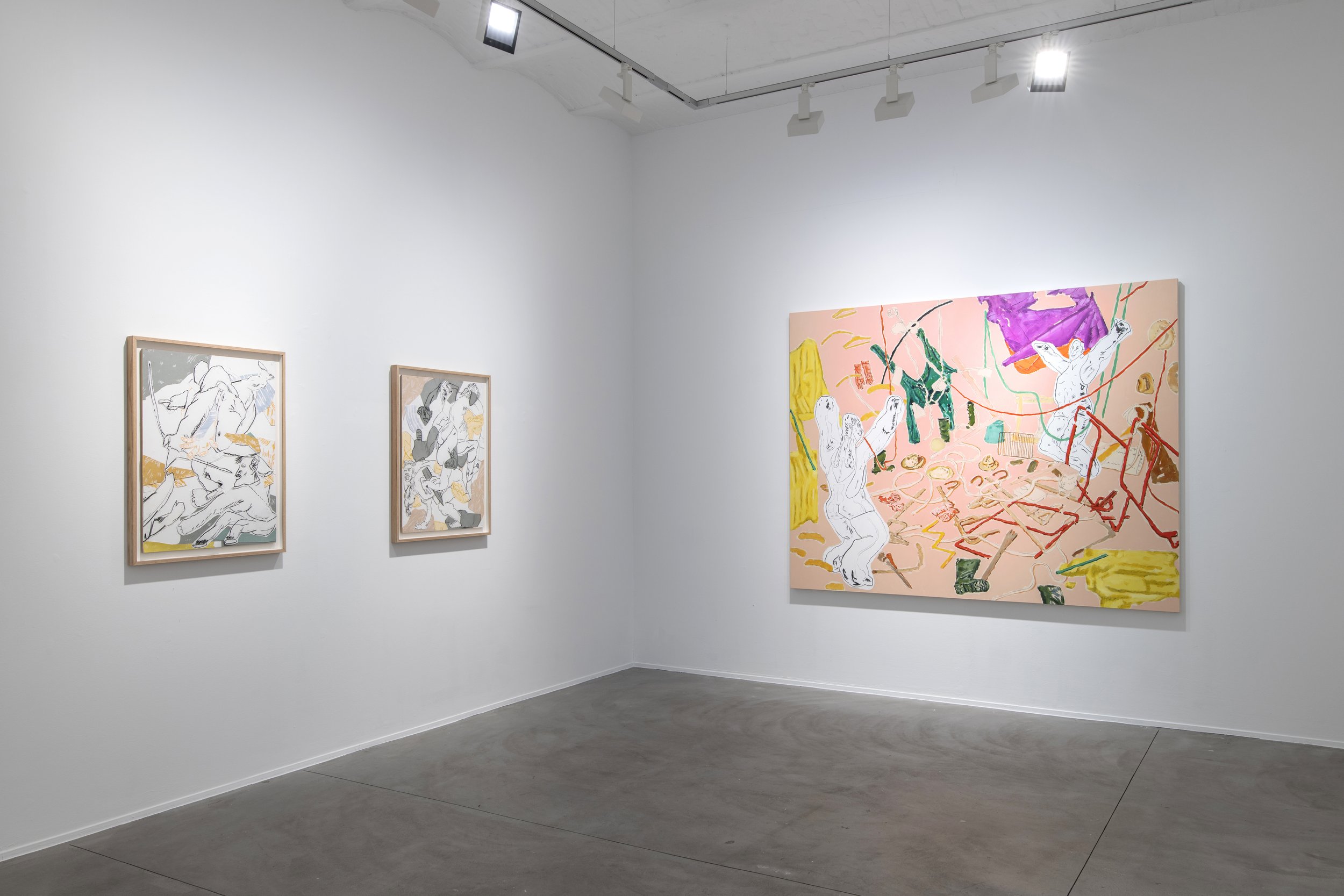
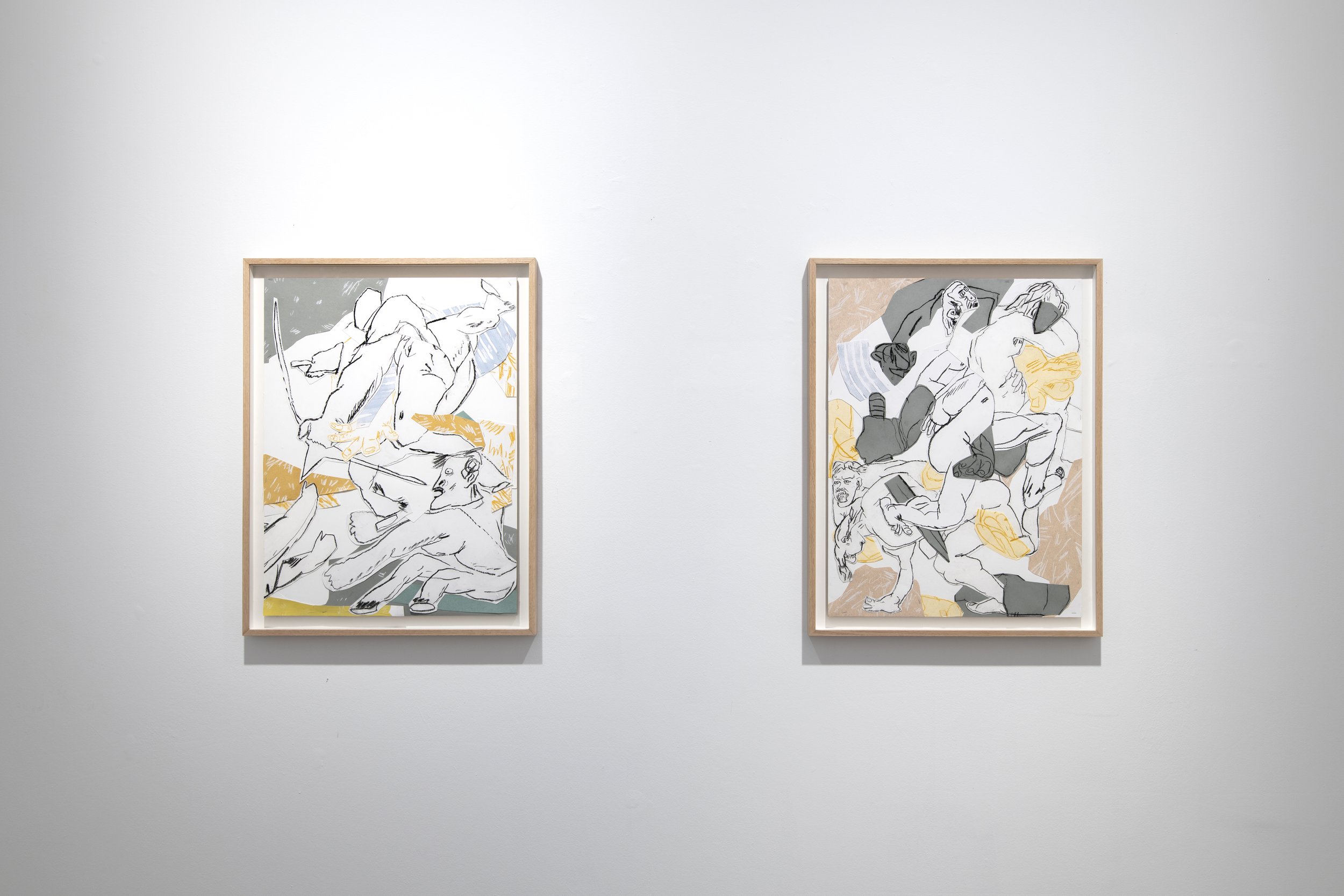
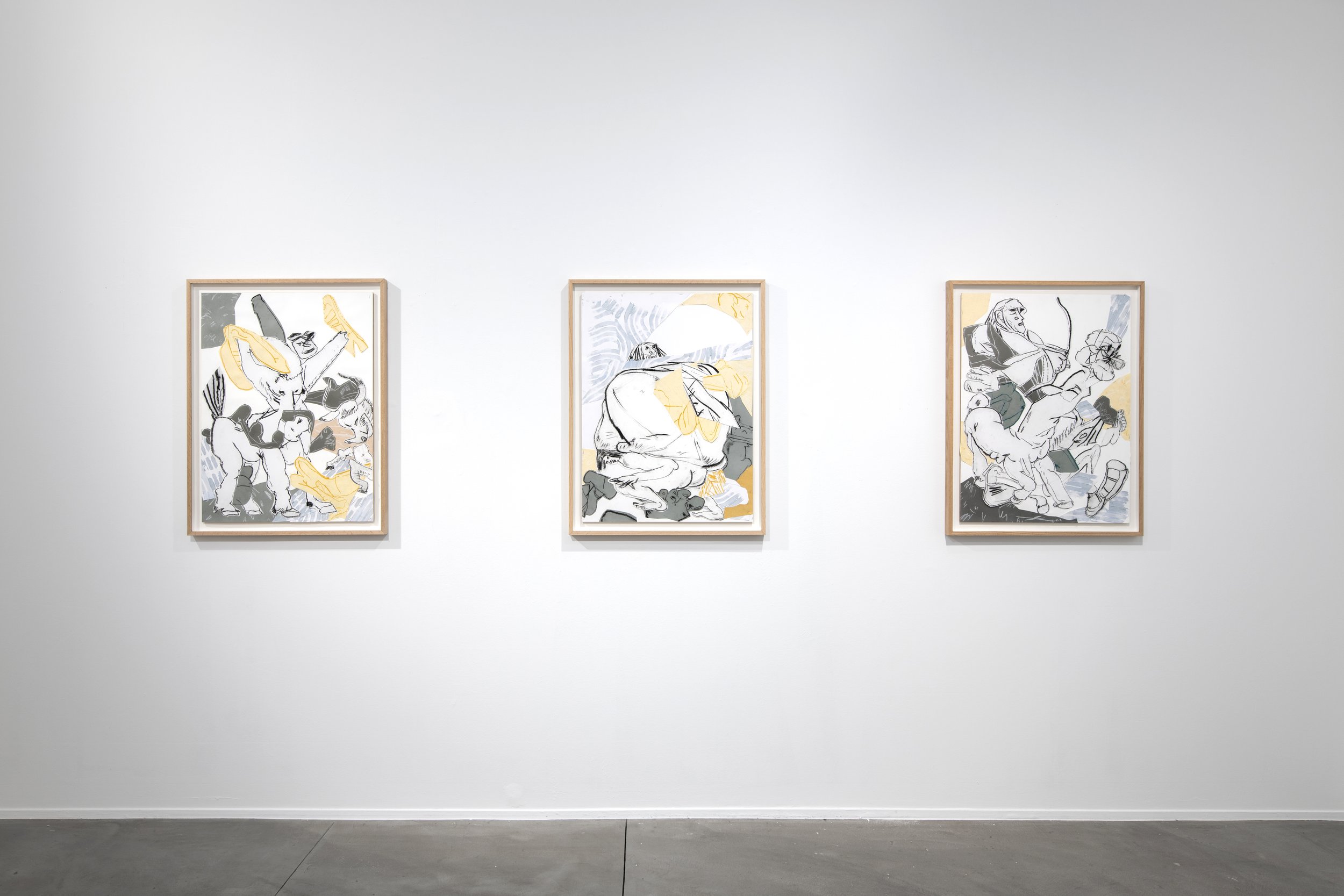
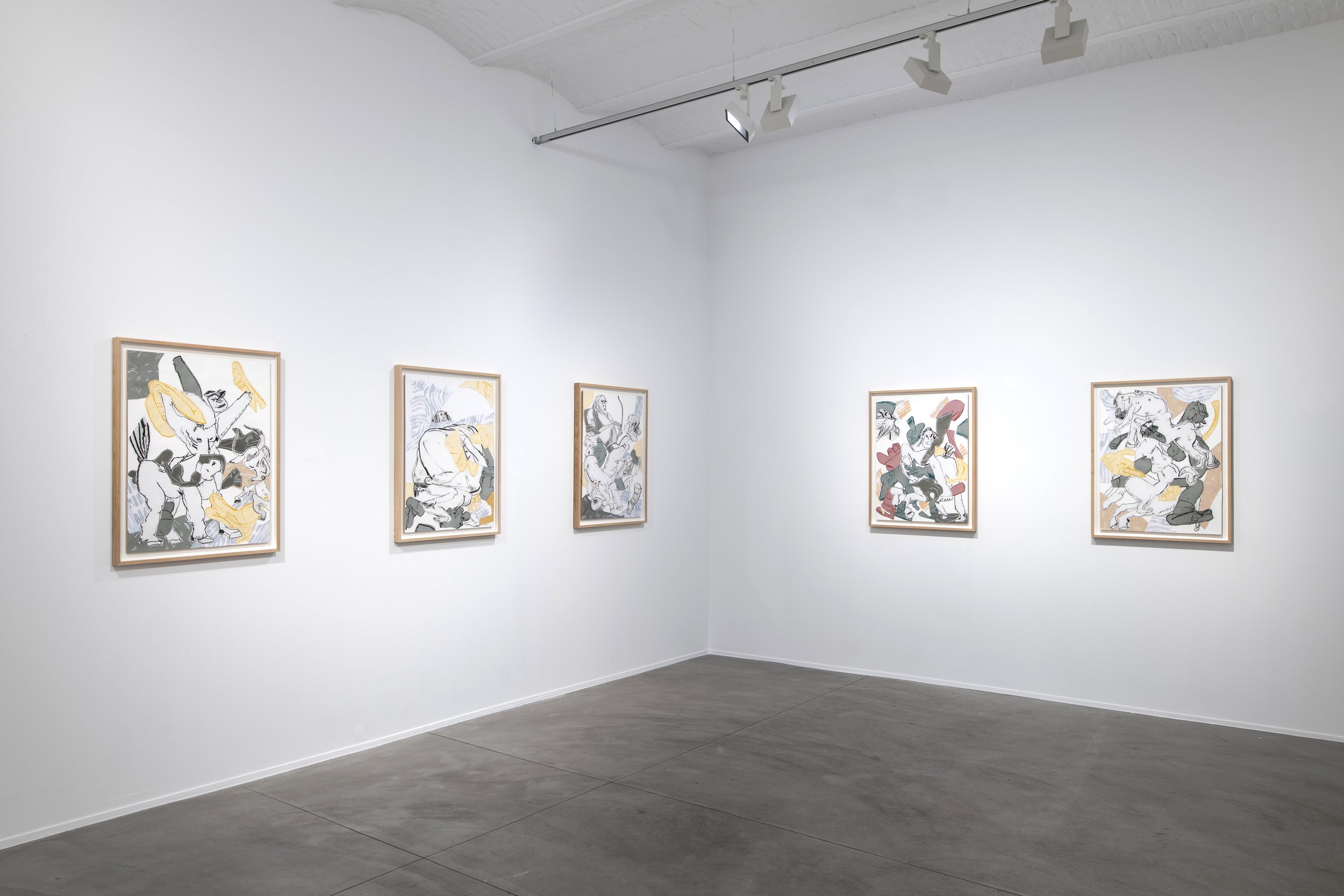
Toutes les images/All images:© Courtesy de l'artiste et TEMPLON, Paris—Brussels—NewYork
“Watching the objects in Zabriskie Point explode raises the question of the repercussions the history of one generation has on the next, the mark it leaves,” explains Léonard Martin.
“I capture the objects on the fly. The film ends in what feels like a point of no return, whereas my paintings imagine possibilities for what came next. How can we find our way through the dreams abandoned by our elders?”
Similarly to emaki, the Chinese, Japanese and Korean illustrated scrolls which foreshadowed cinema, the bird’s-eye view offered by Martin’s paintings prevent the viewer’s gaze from standing still. These paintings do not have a vanishing point, opening the door to multiple interpretations and keeping the images in motion. The solid block of background colour accommodates the objects like the characters on a page of writing. History constantly needs to be rewritten. The profusion of marks that cover the surface of the paintings suggest the constant flow of images, texts and sounds that now fill our daily lives, sometimes blurring our vision. For Martin, “painting might well make it possible to demolish the images, to make the cloud that hangs heavy above our heads rain.”
The series of paintings thus form a sort of musical suite. A next step following on from the film’s missing image (the items falling back to earth after being thrown in the air), from the blind spots of a particular era (the ecological and social impact of the post-war boom years), from the battles still to be fought (police criminality, conservatism, the hubris of progress). The artist asks himself: “how can we stick the fragments of history back together? What should we look for and listen for? My paintings do not take stock. They draw lines, from one memory to another, seeking to repopulate the desert that Antonioni’s lovers fly over.”
Finally, in homage to Flemish painting, the “Quodiblet” series of oils on canvas is inspired by trompe l’oeil to showcase the work of the artist workshop.
Born in 1991 in Paris, Léonard Martin currently lives and works in the French capital. After studying at Beaux-Arts de Paris (graduating in 2015 with first class honours) and Fresnoy – Studio National des Arts Contemporains (graduating in 2017 with first class honours), he showed his work at the Salon de Montrouge, Jeune Création and La Villette in Paris and Collection Lambert in Avignon.
In 2018-2019, he was artist-in-residence at the French Academy in Rome at the Villa Medici. His other prizes and residencies include the Cité Internationale des Arts in Paris in 2019, the ADAGP Digital Art – Video Art Revelation prize in 2017, Prix Dauphine from Université Paris-Dauphine in 2018, and Lafayette Anticipations in 2021. His work was exhibited at the Collection Lambert in Avignon in 2017, La Villette in Paris, the Gwangju Biennale in Korea, Villa Emerige in Paris, and Beaux-Arts de Paris in 2018, and Palais de Tokyo in Paris and Lyon Biennale in 2019.
On January 11th, Suite Zabriskie opened at the Brussels Gallery location and will close on February 24th of, 2024. For more information about this exhibit and other exhibits at the Templon Gallery, please visit their website here. Also, find the Gallery on Instagram and Artsy.


